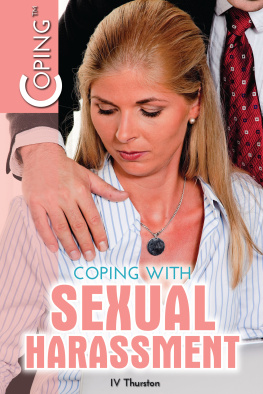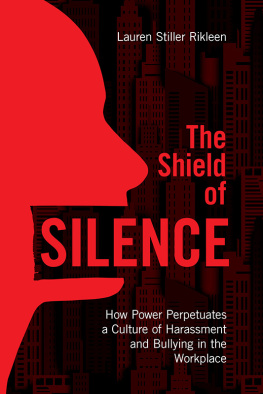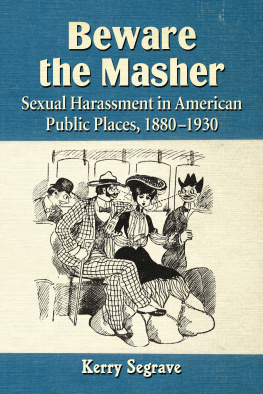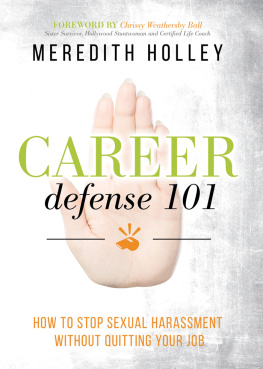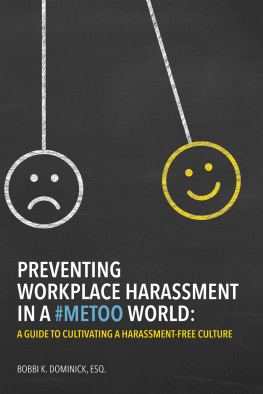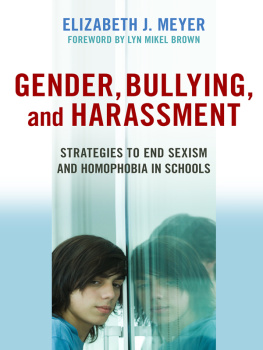Acknowledgements
We are most grateful to the many managers and employees too numerous to mention - within various organisations; their insights have greatly informed our thinking and our view of Values and Best Practice.
We are also most grateful to those managers who read earlier drafts of this book and who enriched us with their insights.
We are greatly indebted to Andrew Kakabadse, Mary Redmond and Frank Kelly for taking the time to read the book and provide us with such wonderful endorsements.
We particularly wish to thank our spouses, Claire and Hugh, for their continuing support; without it this book, and all of our other work, would be less rich.
Frank Scott-Lennon
Margaret Considine
December 2008
2008 Frank Scott-Lennon and Fergus Barry
First published in 2008
Reprinted 2009
ISBN 0-9519738-3-5
ISBN 978-0-9519738-3-7
All rights reserved. No part of this work covered by the copyright herein may be reproduced or used in any form or by any means graphic, electronic or mechanical without the prior written permission of the Publisher.
Any request for photocopying, recording, taping or information storage and retrieval systems of any part of this book should be directed in writing to the Publisher.
Care has been taken to trace ownership of copyright material contained in this book. The Publisher will gladly receive any information that will enable them to rectify any reference or credit line in subsequent editions.
All design, art work and liaison with printers has been undertaken by
Neworld Associates, 9 Greenmount Avenue, Harolds Cross, Dublin 12. www.neworld.com
Publisher: Managements Briefs, 30 The Palms, Clonskeagh, Dublin 14.
Management Briefs
Essential Insights for Busy Managers
Our list of books already published includes:
Be Interview-Wise: How to Prepare for and Manage Your Interviews
Brian McIvor
Best Practice HR for Line Managers:
Frank Scott-Lennon & Conor Hannaway
Bullying and Harassment: Values and Best Practice Responses
Frank Scott-Lennon & Margaret Considine
Career Detection: Finding and Managing Your Career
Brian McIvor
Impactful Presentations: Best Practice Skills
Yvonne Farrell
Managing Projects: Achieving Tasks through Teamwork
Dermot Duff & John Quilliam
Marketing Skills: A Practical Guide for Business
Garry Hynes & Ronan Morris
Performance Management: Developing People and Performance
Frank Scott-Lennon & Fergus Barry
Personal Selling Skills: for High Performance Selling
Ronan McNamara
Redundancy: A Development Opportunity for You!
Frank-Scot Lennon, Fergus Barry & Brian McIvor
Safety Matters!: A Guide to Health and Safety at Work
Adrian Flynn & John Shaw of Phoenix Safety
Time Matters: Making the Most of Your Day
Julia Rowan
Chapter outline
Introduction Definitions Dignity and Respect Bullying and Harassment Sexual Harassment Rights of Natural Justice Empowering those feeling bullied or harassed Best Practice Responses |
Every employee is entitled to have expectations that he/she will be treated with dignity and respect in the workplace. This implies that the behaviour of his/her colleagues and that of management will be such as to pose no challenge to the dignity and respect that is their right. This dignity and respect is due to them not only in the roles which they carry out within the organisation but also as stand alone individuals.
Organisations owe it to their employees to foster a culture of dignity and respect within the organisation through developing and promulgating policies and practices specifically aimed at enhancing such a culture. Every employer should recognise the right of all staff to be treated with dignity & respect at work, and many companies would have a formal Dignity at Work Policy to support this value. This right ensures that all employees are free to do their work in a safe environment which is free from Harassment, Sexual Harassment & Bullying, whether carried out by a member(s) of staff, a customer, a client or a business contact of the employer; this applies to work on the employers premises, assignments off those premises and to social occasions that are work-related.
Looking at the stated values of many organisations they often cite values such as honesty, equality, diversity, learning and many more the stating and the living of a value set for an organisation are very different in paper and in practice.
Take Honesty for example: whether manager or employee we all have the right to this in work, particularly if it is a stated and agreed value. However, we also have the responsibility to afford it to others who have that same right.
For every right in an organisation, we have the same responsibilities:
If we have the right to be heard we have the responsibility to listen and hear
If we have the right to autonomy, we have the responsibility to afford it to staff (relative to their will and skill)
If we have the right to be treated with integrity, we have the responsibility to act with integrity ourselves
Panel 1.1
Dignity and respect
Dignity and respect is what all individuals feel when the climate within an organisation is one that takes positive action to support behaviours that contribute to dignity and respect and stamp out those that go against it.
Major challenges to such a culture of dignity and respect arise from Bullying and Harassment (B&H) behaviour which speaks volumes about the individual who perpetrates such behaviour. Such Bullying and Harassment behaviour usually has very little to do with the person it is perpetuated against. Bullying is therefore mostly saying more about the bully than the person being bullied.
The situation has varying levels of effects on the individual who is on the receiving end of such B&H behaviour. Brief definitions of both Bullying & Harassment and Sexual Harassment are shown in Panel 1.2, 1.3 (below) and 1.4 overleaf.
Panel 1.2
A useful working definition of Bullying
Workplace bullying is repeated inappropriate behaviour, direct or indirect, whether verbal, physical or otherwise, conducted by one or more persons against another or others, at the place of work and/or in the course of employment, which could reasonably be regarded as undermining the individuals right to dignity at work. An isolated incident of the behaviour described in this definition may be an affront to dignity at work but as a once-off incident is not considered to be bullying.
Example:
Imogen started work in a reputable financial institution eighteen months ago, passed her probationary review and has had good performance reviews ever since. Recently her reporting line changed and her new manager has a very different style and approach to her previous boss. Her new manger is often rude to her in front of colleagues and at client meetings. Imogen feels that she is being bullied. She asserts that the quality of her work is being questioned in public and held up for ridicule, with statements like, I wouldnt have done it like that, this is not up to our professional standard, or at team meetings, displaying on a LCD screen one of her recent emails to a client as an example of poor business English.
Panel 1.3
Harassment in practice is similar to sexual harassment but on grounds other than gender.
Harassment is a form of discrimination and is normally based on one of the following relevant characteristics of the employee: Marital Status, Family Status, Sexual Orientation, Religious Belief (or none), Age, Disability, Race, Colour, Nationality or ethnic or national origin, or membership of a minority community.


